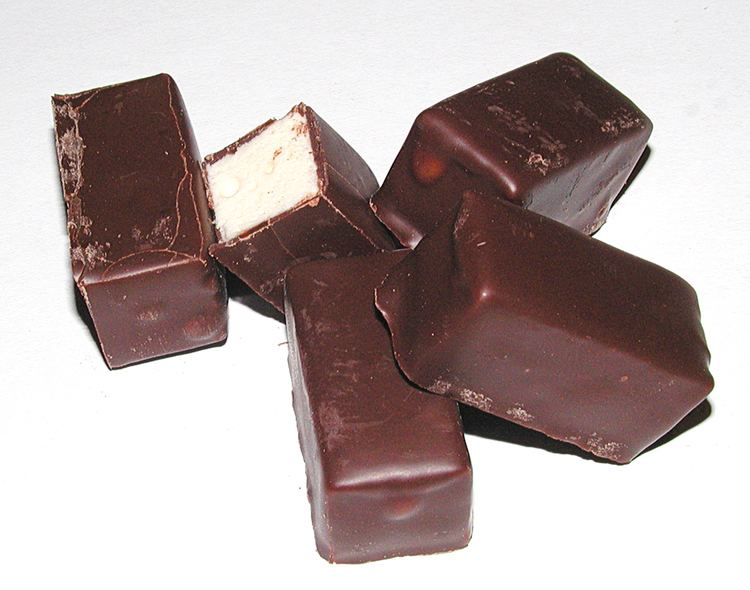 | ||
Similar Chocolate, Sugar, Zefir, Soufflé, Sponge cake | ||
Ptasie mleczko smaczne przepisy tv
Ptasie mleczko ([ptaɕɛ mlɛtʂkɔ]) is a soft chocolate-covered candy filled with soft meringue or milk soufflé. It is called ptichye moloko (птичье молоко, [ˈptʲitɕjɪ məlɐˈko]) in Russian, lapte de pasăre ([ˈlapte de ˈpasəre]) in Romanian, ptashyne moloko (пташине молоко) in Ukrainian, and linnupiim in Estonian. All these names literally mean "bird's milk" or crop milk, a substance somewhat resembling milk, produced by certain birds to feed their young. However, this is not the origin of the name; rather, "bird's milk" is an idiom of ancient Greek origin meaning "an unobtainable delicacy" (compare English: "hen's teeth").
Contents
- Ptasie mleczko smaczne przepisy tv
- Jak zrobi oryginalne ptasie mleczko z chrrrupi c czekolad kr
- Origin of the name
- History and variations
- Trade marks
- References
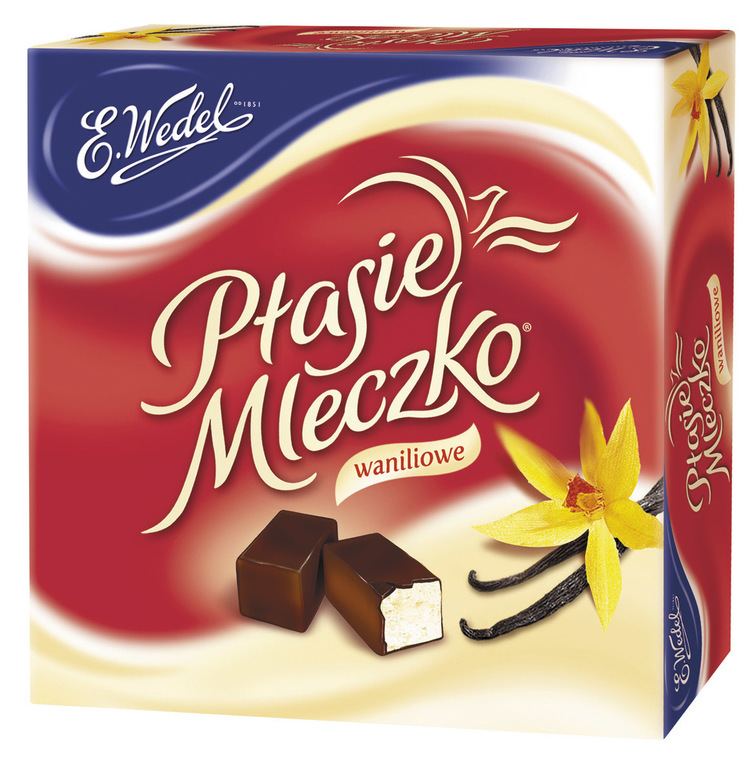
It is one of the most recognized chocolate confectionery in Poland having exclusive rights for the name. Other confectionery producers also make similar candies but named differently (e.g. Alpejskie mleczko, "Alpine milk"). Nonetheless, Ptasie mleczko is often used to refer similar candies with vanilla, cream, lemon or chocolate taste.
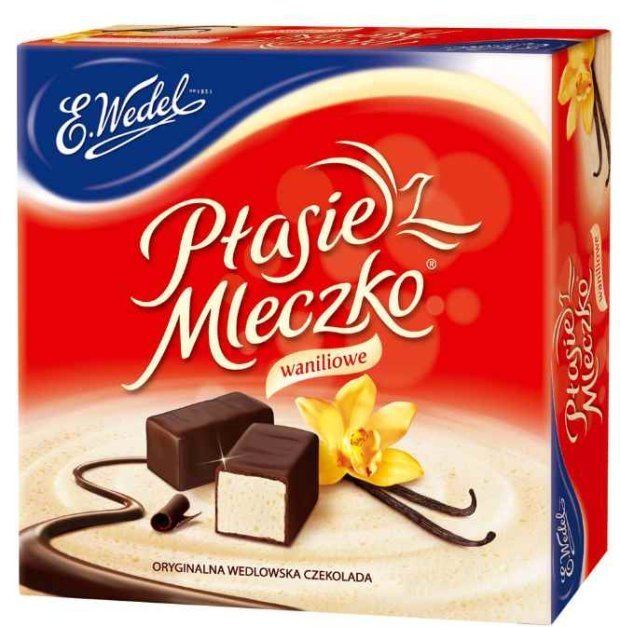
In Russia ptichye moloko is both a popular candy and a famous soufflé cake. The brand was introduced in the Soviet times and is nowadays used by the companies operating the factories which produced these candies and cakes since that time. The candies are also produced in other post-Soviet states, in particular in Belarus, Ukraine, Moldova and Estonia.
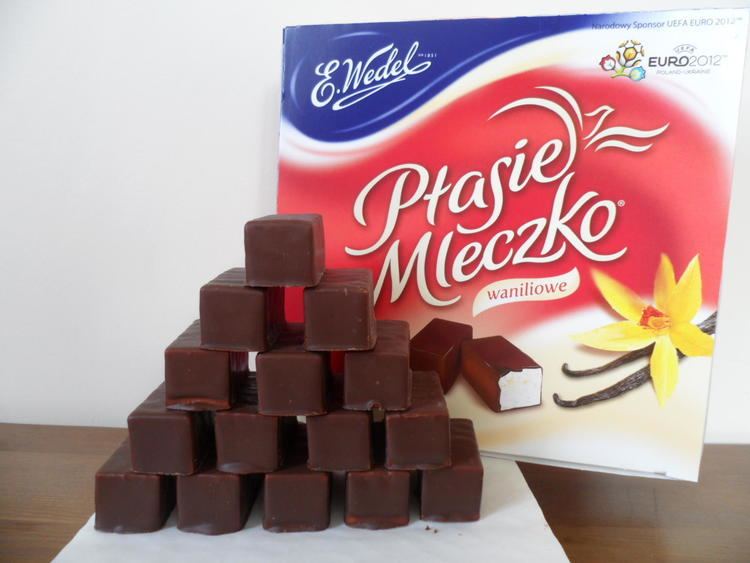
Jak zrobi oryginalne ptasie mleczko z chrrrupi c czekolad kr
Origin of the name
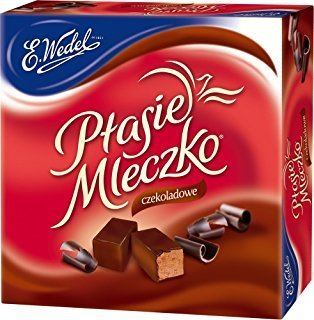
The concept of avian milk (Ancient Greek: ὀρνίθων γάλα, ornithon gala) stretches back to ancient Greece. Aristophanes uses "the milk of the birds" in the plays The Birds and The Wasps as a proverbial rarity. The expression is also found in Strabo's Geographica where the island of Samos is described as a blest country to which those who praise it do not hesitate to apply the proverb that "it produces even bird's milk" (φέρει καί ὀρνίθων γάλα). A similar expression lac gallinaceum (Latin for "chicken's milk") was also later used by Petronius (38.1) and Pliny the Elder (Plin. Nat. pr. 24) as a term for a great rarity. The idiom became later common in many languages and appeared in Slavic folk tales. In one such tale the beautiful princess tests the ardor and resourcefulness of her suitor by sending him out into the wilderness to find and bring back the one fantastical luxury she does not have: bird's milk. In the fairy tale Little Hare by Aleksey Remizov (who wrote many imitations of traditional Slavic folk tales) the magic bird Gagana produces milk.
History and variations
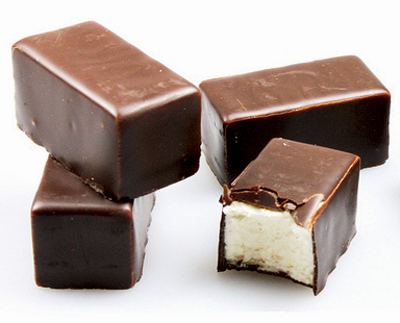
In Poland, Jan Wedel, owner of the E. Wedel Company, developed the first ptasie mleczko in 1936. According to the company's official history, Wedel's inspiration for the name of the confectionery came from his voyages to France, when he asked himself: "What could bring greater happiness to a man who already has everything?" Then he thought: "Maybe only bird milk."

In Russia, ptichye moloko was originally a type of candy introduced in 1967 in Vladivostok and in 1968 by the Rot Front factory in Moscow. It became a hit, and mass production was started in 1975 by the Krasny Oktyabr ("Red October") confectionery factory in Moscow. In 1978, the popular candy was transformed into a cake by Vladimir Guralnik in Moscow's Praga Restaurant. This was a light sponge cake filled with an airy soufflé and topped with chocolate glaze. A distinct feature of the Russian recipe is the usage of agar-agar instead of gelatin as a thickening agent which withstands the high temperature needed to reach the optimum soufflé consistency. The recipe was quickly copied by other restaurants in Moscow, such as Moskva, Budapesht, and Ukraina. In the 1980s, a special factory for ptichye moloko cakes was built in the Novye Cheryomushky district in the south of Moscow. Both the cake and the candy versions of ptichye moloko are widely available to this date in supermarkets and specialty stores all over Russia.
In Estonia, linnupiim (also "bird's milk" in Estonian) is the brand name of a similar candy made by the Kalev candy factory. This candy uses agar-agar instead of gelatin as a thickening agent and comes in three flavors: chocolate, vanilla, and lemon.
In Moldova, lapte de pasăre (also "bird's milk" in Romanian) is the brand name of a similar candy made by the Bucuria candy factory. Despite the name, the candy is not to be confused with the Romanian traditional dessert lapte de pasăre.
Trade marks
The phrases Ptasie Mleczko, Vogelmilch, and Ptiche Moloko are registered trademarks in the EU.
